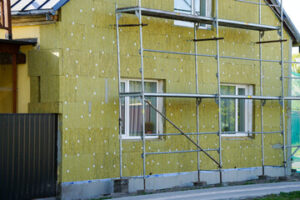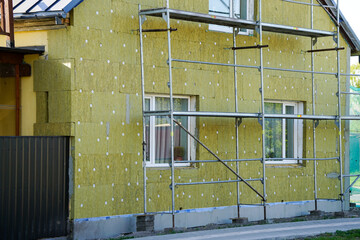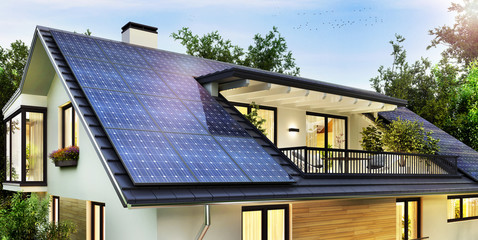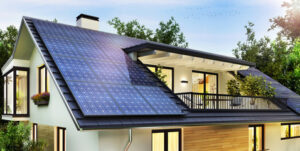Insulation provides resistance to heat flow, lowering heating and cooling costs and improving comfort. There are many types of insulation, ranging from bulky fiber materials like fiberglass, rock and slag wool, natural fibers, and cellulose to foil barriers and reflective insulation systems.
Foils, films, and papers fitted between wood-frame studs, joists, and rafters with standard spacing. Insulation Removal Perth is effective for preventing downward heat flow, depending on spacing and type of barrier used.
 Rigid Foam Insulation
Rigid Foam Insulation
Rigid foam insulation is a popular choice for new construction or retrofitting old houses. It is manufactured as rectangular boards to create a thermal barrier and can be installed on the exterior or inside of walls or roofs, depending on where the best results are needed. The material is available in a wide range of thicknesses and lengths to meet your needs. Foam board insulation has a high R-value, which means it provides excellent thermal resistance and reduces the conduction of heat through wood or steel studs. The material is also moisture resistant and does not absorb or retain water, which can prevent mold or mildew growth.
Rigid insulation is offered in a variety of materials, including plastics such as expanded and extruded polystyrene (EPS and XPS) or polyisocyanurate foam board (polys). The type you choose depends on your project, the building envelope, and the budget. For example, EPS has air bubbles that stop heat transfer but can collect moisture and degrade over time, while polyso has a high R-value but loses some of its insulating properties when exposed to sunlight. The foam can be applied as a layer in wall cavities or, more commonly, as a pre-applied rigid insulation component in insulated plasterboard.
In addition to its versatility, the material is very cost-effective and provides a great return on investment, since it can reduce energy costs by creating a more sealed building envelope and reducing drafts and air leakage. In new construction, EPS or polyiso can be used as the first layer of insulation in a wall cavity or a roof system, and it is often laminated with air and vapor barriers to provide an all-in-one solution.
Injection Foam Insulation
Injection foam is a spray-applied material that is injected into walls to fill the space. It is a cost-effective solution to re-insulate older homes that have little or no insulation and can also help reduce energy bills.
It is pumped into wall cavities in a liquid form that has the consistency of shaving cream and flows freely to fill all the nooks and crannies. It can even get behind pipes, wires, and electrical outlets. Once it is injected, the foam fills the entire wall cavity and blocks heat conduction, air leakage, and cold drafts.
Injection foam will not lose its shape in the wall cavity, unlike fiberglass or cellulose, and therefore will not sag over time. It can keep a home’s temperature stable without the furnace and air conditioner working overtime, which saves on utility bills. The air barrier it creates will also block outside noise and improve indoor air quality.
This type of insulation is a great option for older homes that have inadequate or old fiberglass or cellulose insulation. It can be added to a home’s existing wall with ease and is installed from the exterior of the home, eliminating the need to tear down and redo walls.
While it is possible to install injection foam yourself, it is best left to a professional insulation contractor who has the experience and equipment necessary. The work is messy and dangerous, and it requires a certain level of skill to ensure it is done correctly. A reputable company will be licensed, and insured, and provide an energy audit to determine what types of insulation are best for your home. This will help ensure the most return on your investment and the comfort and value of your home.
SucraSeal
SucraSeal open-cell spray foam is a cost-effective insulator that is environmentally responsible and safe for homeowners, builders, and installers. It is BBA-certified for use in suspended floor crawl spaces and it provides a strong thermal seal that will not shrink, degrade, or slip over time. It is also a perfect insulation solution for new-build residential pitched roofs and stud walls, as well as commercial and industrial buildings where airtight, low-energy performance is important.
The open cell structure of sucraSeal foam encapsulates and seals every nook, cranny, and crack in the building envelope, which helps to prevent energy loss and improves the efficiency of the home’s heating and cooling system. This results in lower monthly utility bills and a healthier, safer home environment. Sucrose-based SucraSeal has zero food value for rodents and insects, is mold, mildew, and moisture resistant, as well as a fire retardant.
Because sucraSeal insulation is an airtight, dense insulation that eliminates air infiltration, it also reduces allergens and dust particles in the home. This gives relief to allergy sufferers and reduces the amount of time spent on dusting.
Unlike traditional fiberglass, sucraSeal is not contaminated with asbestos or lead and contains no harmful fibers that can irritate the respiratory system. This makes it the perfect insulation for families with allergies and other health concerns. It is a non-toxic product that is safe when used according to manufacturer guidelines. In addition, it is non-ozone depleting and does not contain CFCs or HCFCs. As a result, it qualifies as an EnergyStar product and meets the USDA BioPreferred program criteria. SucraSeal is an excellent choice for both new and existing homes and can be easily installed by our qualified installers.
External Thermal Insulation Composite Systems
The ETICS system, also known as EIFS (Exterior Insulation Finish Systems), is the most common solution for insulating new and renovated buildings. It is comprised of several layers, including a base coat, reinforced mesh, and a finishing coat. This system is highly flexible and allows for different combinations of materials and finishes, making it suitable for a wide variety of building structures and styles. In addition to its thermal insulation properties, ETICS also provides acoustic and moisture resistance.
ETICS significantly reduces energy consumption in cold and warm climates, lowering costs and improving comfort. They limit heat transfer by eliminating thermal bridges and storing energy in the facade, thereby reducing the amount of energy needed to keep homes comfortable. In addition, they reduce humidity levels and excessive noise in residential areas.
The energy savings achieved by ETICS make it one of the most effective ways to renovate existing buildings. It is particularly beneficial in urban environments where the energy demand is high and there are limited opportunities to install external insulation. Moreover, the improvement in comfort and market value of the property far exceeds the investment required to install the system.
Despite their considerable advantages, ETICS are subject to problems of biological defacement of the cladding, causing disapproval among building dwellers. This is due to a high content of surface moisture and the effects of the exterior climate on the cladding, such as condensation, wind-driven rain, and the drying process. Dispersible polymer powders are an essential ingredient in the base and render coats of these systems, providing a barrier against water penetration, fungi, and algae growth and maintaining the integrity of the entire facade.
Atrium
Atrium is a mineral-insulating foam for new and existing buildings that is both easy to install and sustainable. It has been tested in harsh climatic conditions such as the Austrian winter and the Algerian summer and can ensure thermal comfort all year round thanks to its excellent phase shift property. This allows heat to enter the building in summer but it takes longer to leave in winter, reducing energy consumption and CO2 emissions.
The insulating foam is made onsite with purely local ingredients, so it has less embodied carbon than its alternatives, is easier for applicators and builders to work with, and can be recycled along with the block with no separation phase. It is also fire-resistant, non-toxic, and doesn’t emit volatile organic compounds to improve indoor air quality. It is also durable and can resist mold and insects while being odorless and unaffected by moisture.


